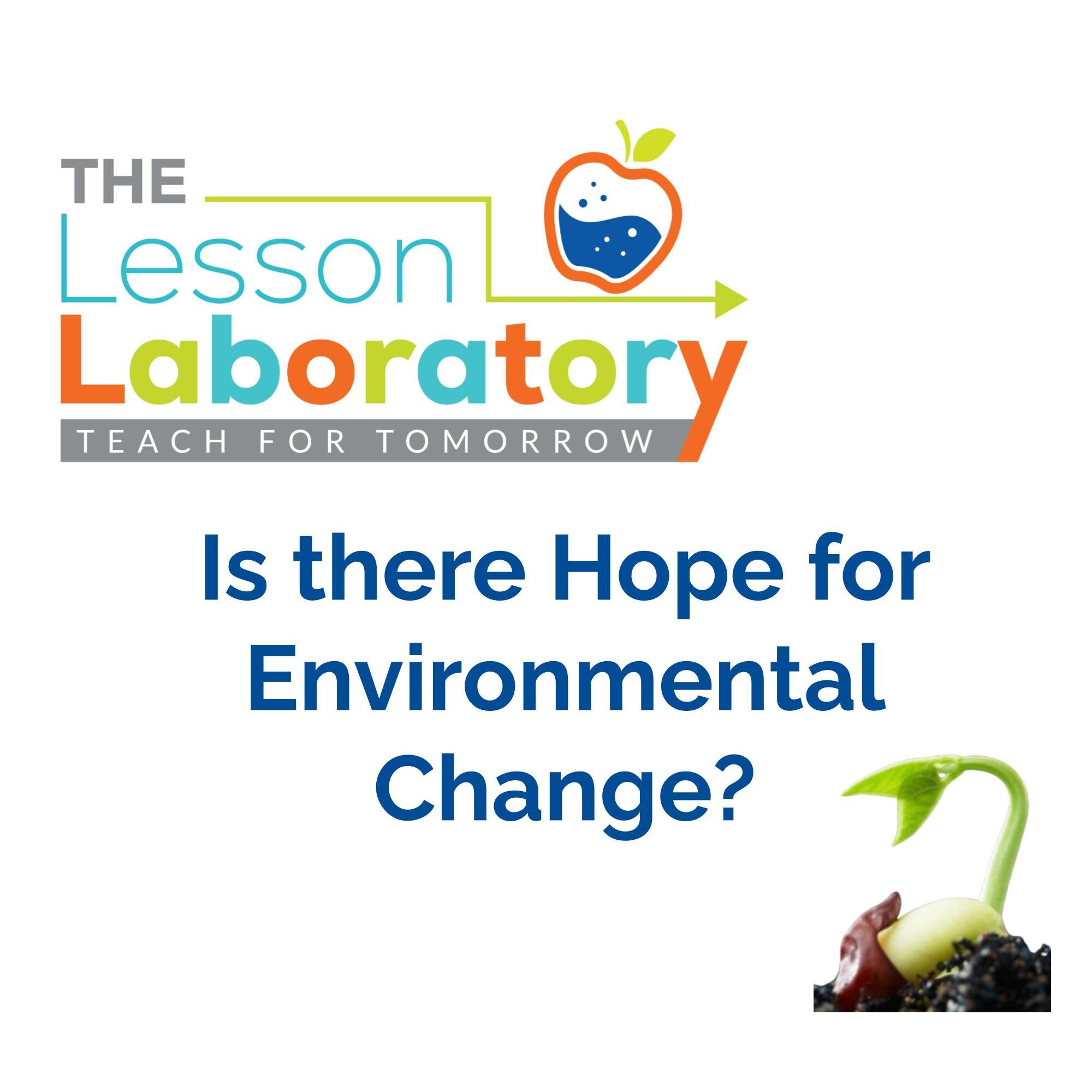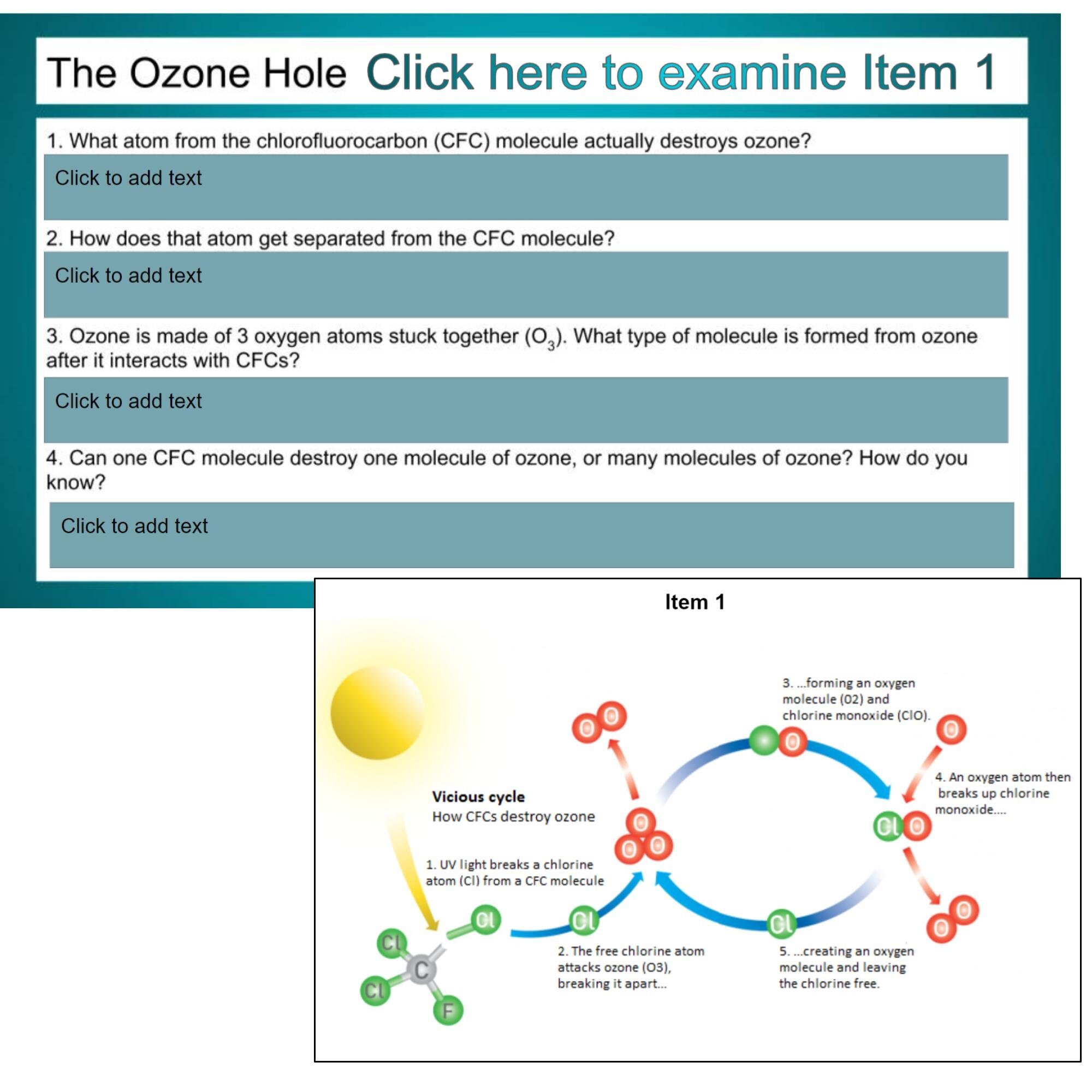 Image 1 of 4
Image 1 of 4

 Image 3 of 4
Image 3 of 4

 Image 4 of 4
Image 4 of 4





Is there Hope for Environmental Change?
Unravel the mysteries of daunting environmental issues and inspire hope with our transformative assignment. Addressing six significant environmental challenges that have been either partially or fully resolved, this assignment takes your students on a journey that educates, empowers, and fosters positive change.
Why Choose Our Environmental Hope Assignment?
Shifting Perspective: Complex environmental problems can be overwhelming, leaving students disheartened. Our assignment redefines the narrative by showcasing environmental successes, reinforcing that solutions are possible and within reach.
Interactive Learning Odyssey: Dive into an immersive learning experience that engages students through an array of multimedia resources. From videos and audio files to articles, infographics, and interactive elements, each student's learning style is honored.
Customizable Flexibility: Tailor the assignment to your classroom needs. Whether students explore three or all six environmental problems, the assignment's adaptable nature ensures it fits your curriculum's goals and time constraints.
Venture into Environmental Triumphs:
Lead Pollution: Discover how lead pollution, once a looming crisis, was addressed. Through multimedia exploration, students comprehend the causes, solutions, and the triumphs of science and policy.
Ozone Hole Healing: Embark on a journey to understand the ozone hole and its remarkable healing process. Students delve into a variety of resources to grasp both the threat and the collaborative solutions.
Water and Air Pollution Alleviation: Uncover the pivotal steps taken to mitigate water and air pollution, examining the strategies that led to improved environmental conditions.
Acid Rain Resolution: Delve into the complexities of acid rain and its remarkable decline. Through comprehensive analysis, students uncover the blend of scientific understanding and global cooperation that fostered change.
DDT Dilemma: Explore the tale of DDT, from its widespread use to its regulation. Through interactive elements, students grasp the far-reaching effects of activism and the implementation of policies.
Habitat Restoration: Venture into the realm of habitat destruction and restoration. Students absorb the lessons of past mistakes while recognizing the power of conservation efforts in reversing damage.
Empower, Educate, and Envision:
This assignment isn't just an academic exercise; it's a catalyst for hope, action, and empowerment. As students unravel these success stories, they recognize the potential for change and their own role in shaping a sustainable future.
Equip your students with the knowledge and motivation to make a difference. Invest in their education today and watch as they grasp the incredible impact they can have on the world around them.
To preview this product, highlight the link below and paste the address into your web browser.
https://docs.google.com/presentation/d/1lBSRxaI4QotARKIrR4N0wg1CUFUN0RyZxH6klbsDDkQ/edit?usp=sharing
Grade & Course Recommendation:
Middle School: Grade 8 Life Science or Earth Science, human impact and sustainability unit.
High School: Grades 9–10 Biology or Earth Science, ecology, resource management, and human impact unit.
Cross-Curricular Connections:
ELA Integration: Students write persuasive essays or evidence-based arguments about climate solutions.
Social Studies Integration: Links to global policy, environmental justice, and human geography.
Math Integration: Data analysis using charts or climate trends.
Daily slide + literacy - based exit ticket included with purchase
Join the Lesson Laboratory and Teach for Tomorrow!
NGSS (Next Generation Science Standards)
High School NGSS Alignment
HS-LS2-7: Design, evaluate, and refine a solution for reducing the impacts of human activities on the environment and biodiversity.
Connection: Students analyze how real-world policies (e.g., Clean Air Act, Montreal Protocol) reduced pollution and restored ecosystems.HS-ESS3-4: Evaluate or refine a technological solution that reduces impacts of human activities on natural systems.
Connection: Students examine technological innovations (scrubbers, catalytic converters, DDT bans) that improved environmental conditions.HS-ESS3-6: Use a computational representation to illustrate the relationships among Earth systems and how those relationships are being modified due to human activity.
Connection: Students investigate cause-and-effect relationships between human pollution, atmospheric chemistry, and ecosystem health.
Science & Engineering Practices:
Analyzing and interpreting data
Constructing explanations and designing solutions
Engaging in argument from evidence
Obtaining, evaluating, and communicating information
Crosscutting Concepts:
Cause and effect
Stability and change
Human-environment interactions
Systems and system models
Middle School NGSS Alignment
MS-ESS3-3: Apply scientific principles to design a method for monitoring and minimizing a human impact on the environment.
Connection: Students evaluate how past environmental crises were monitored and mitigated.MS-ESS3-4: Construct an argument supported by evidence for how increases in human population and per-capita consumption of natural resources impact Earth’s systems.
Connection: Students link industrial growth to global pollution issues and recovery efforts.MS-ESS3-5: Ask questions to clarify evidence of the factors that have caused climate change over the past century.
Connection: Students explore air pollution and atmospheric impacts as early examples of human-driven climate influence.
Common Core Standards
Grades 8–10:
CCSS.ELA-LITERACY.RST.8.1 / RST.9-10.1: Cite specific textual evidence to support analysis of scientific texts describing environmental change and solutions.
CCSS.ELA-LITERACY.RST.8.2 / RST.9-10.2: Determine central ideas and summarize key improvements from environmental restoration efforts.
CCSS.ELA-LITERACY.RST.8.7 / RST.9-10.7: Integrate visual, quantitative, and textual information from multimedia sources (videos, graphs, and EPA data).
CCSS.ELA-LITERACY.WHST.8.2 / WHST.9-10.2: Write explanatory texts to convey complex scientific processes (e.g., ozone recovery, acid rain neutralization).
CCSS.ELA-LITERACY.WHST.8.9 / WHST.9-10.9: Draw evidence from informational texts to support analysis and conclusions about human impact and environmental change.
Unravel the mysteries of daunting environmental issues and inspire hope with our transformative assignment. Addressing six significant environmental challenges that have been either partially or fully resolved, this assignment takes your students on a journey that educates, empowers, and fosters positive change.
Why Choose Our Environmental Hope Assignment?
Shifting Perspective: Complex environmental problems can be overwhelming, leaving students disheartened. Our assignment redefines the narrative by showcasing environmental successes, reinforcing that solutions are possible and within reach.
Interactive Learning Odyssey: Dive into an immersive learning experience that engages students through an array of multimedia resources. From videos and audio files to articles, infographics, and interactive elements, each student's learning style is honored.
Customizable Flexibility: Tailor the assignment to your classroom needs. Whether students explore three or all six environmental problems, the assignment's adaptable nature ensures it fits your curriculum's goals and time constraints.
Venture into Environmental Triumphs:
Lead Pollution: Discover how lead pollution, once a looming crisis, was addressed. Through multimedia exploration, students comprehend the causes, solutions, and the triumphs of science and policy.
Ozone Hole Healing: Embark on a journey to understand the ozone hole and its remarkable healing process. Students delve into a variety of resources to grasp both the threat and the collaborative solutions.
Water and Air Pollution Alleviation: Uncover the pivotal steps taken to mitigate water and air pollution, examining the strategies that led to improved environmental conditions.
Acid Rain Resolution: Delve into the complexities of acid rain and its remarkable decline. Through comprehensive analysis, students uncover the blend of scientific understanding and global cooperation that fostered change.
DDT Dilemma: Explore the tale of DDT, from its widespread use to its regulation. Through interactive elements, students grasp the far-reaching effects of activism and the implementation of policies.
Habitat Restoration: Venture into the realm of habitat destruction and restoration. Students absorb the lessons of past mistakes while recognizing the power of conservation efforts in reversing damage.
Empower, Educate, and Envision:
This assignment isn't just an academic exercise; it's a catalyst for hope, action, and empowerment. As students unravel these success stories, they recognize the potential for change and their own role in shaping a sustainable future.
Equip your students with the knowledge and motivation to make a difference. Invest in their education today and watch as they grasp the incredible impact they can have on the world around them.
To preview this product, highlight the link below and paste the address into your web browser.
https://docs.google.com/presentation/d/1lBSRxaI4QotARKIrR4N0wg1CUFUN0RyZxH6klbsDDkQ/edit?usp=sharing
Grade & Course Recommendation:
Middle School: Grade 8 Life Science or Earth Science, human impact and sustainability unit.
High School: Grades 9–10 Biology or Earth Science, ecology, resource management, and human impact unit.
Cross-Curricular Connections:
ELA Integration: Students write persuasive essays or evidence-based arguments about climate solutions.
Social Studies Integration: Links to global policy, environmental justice, and human geography.
Math Integration: Data analysis using charts or climate trends.
Daily slide + literacy - based exit ticket included with purchase
Join the Lesson Laboratory and Teach for Tomorrow!
NGSS (Next Generation Science Standards)
High School NGSS Alignment
HS-LS2-7: Design, evaluate, and refine a solution for reducing the impacts of human activities on the environment and biodiversity.
Connection: Students analyze how real-world policies (e.g., Clean Air Act, Montreal Protocol) reduced pollution and restored ecosystems.HS-ESS3-4: Evaluate or refine a technological solution that reduces impacts of human activities on natural systems.
Connection: Students examine technological innovations (scrubbers, catalytic converters, DDT bans) that improved environmental conditions.HS-ESS3-6: Use a computational representation to illustrate the relationships among Earth systems and how those relationships are being modified due to human activity.
Connection: Students investigate cause-and-effect relationships between human pollution, atmospheric chemistry, and ecosystem health.
Science & Engineering Practices:
Analyzing and interpreting data
Constructing explanations and designing solutions
Engaging in argument from evidence
Obtaining, evaluating, and communicating information
Crosscutting Concepts:
Cause and effect
Stability and change
Human-environment interactions
Systems and system models
Middle School NGSS Alignment
MS-ESS3-3: Apply scientific principles to design a method for monitoring and minimizing a human impact on the environment.
Connection: Students evaluate how past environmental crises were monitored and mitigated.MS-ESS3-4: Construct an argument supported by evidence for how increases in human population and per-capita consumption of natural resources impact Earth’s systems.
Connection: Students link industrial growth to global pollution issues and recovery efforts.MS-ESS3-5: Ask questions to clarify evidence of the factors that have caused climate change over the past century.
Connection: Students explore air pollution and atmospheric impacts as early examples of human-driven climate influence.
Common Core Standards
Grades 8–10:
CCSS.ELA-LITERACY.RST.8.1 / RST.9-10.1: Cite specific textual evidence to support analysis of scientific texts describing environmental change and solutions.
CCSS.ELA-LITERACY.RST.8.2 / RST.9-10.2: Determine central ideas and summarize key improvements from environmental restoration efforts.
CCSS.ELA-LITERACY.RST.8.7 / RST.9-10.7: Integrate visual, quantitative, and textual information from multimedia sources (videos, graphs, and EPA data).
CCSS.ELA-LITERACY.WHST.8.2 / WHST.9-10.2: Write explanatory texts to convey complex scientific processes (e.g., ozone recovery, acid rain neutralization).
CCSS.ELA-LITERACY.WHST.8.9 / WHST.9-10.9: Draw evidence from informational texts to support analysis and conclusions about human impact and environmental change.